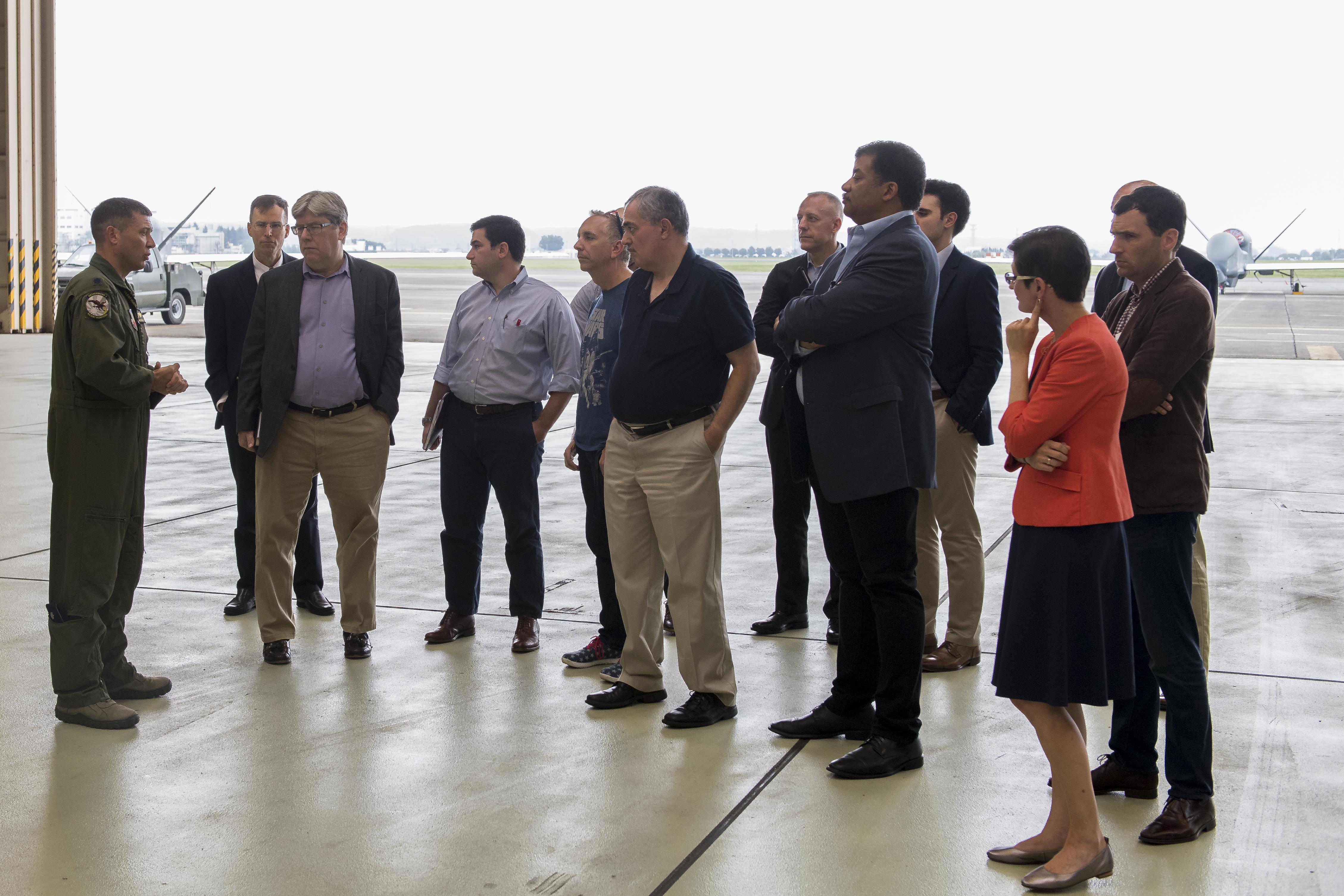
Lt. Col. Tanner Woolsey, 69th Reconnaissance Group Det. 1 commander, discusses the capabilities of the RQ-4 Global Hawk with members of the Defense Innovation Board on Sept. 6, 2017, at Yokota AB, Japan. The Defense Innovation Board was established to help the United States military with new methods of innovation and best practice. USAF photo.
The Defense Innovation Board held its second public meeting Tuesday and issued four new recommendations to help the Department of Defense speed up the development and fielding of new technologies. After months of visiting various US military installations, the members of the civilian advisory group agreed “there is no shortage of innovation in the Defense Department,” as Jennifer Pahlka, founder of Code for America, said. The goal of the new recommendations, she said, is “to empower the innovators that already exist in the military.”
First, the DIB advised the Department to create new tiger teams focused on discrete, complex innovation challenges.
The DOD needs to “identify and prioritize a small number of its most critical warfighting problems” and then “assemble cross-functional teams across organizational boundaries to attack them,” said Milo Medin, a vice president at Google Capital. For this idea to work, Medin insisted, DOD must give the new tiger teams “the decision-making ability to actually execute,” which means they should be able to “rapidly prototype, experiment, and then go into production” on their own authority.
Next, the board recommended the creation of “a new career field focused on innovation and rapid capability development” that would become a devoted professional space for science, technology, engineering, and mathematics (STEM) experts. Currently, in all the services, “there’s no career field for these areas of expertise,” said Marne Levine, chief operating officer of Instagram.
This “hinders recruitment and it hinders retention,” she said. The goal should be to turn DOD into “a place where individuals can build a career in STEM,” and a new STEM career field would “allow for more rapid and efficient adoption, integration, and iteration of new technologies,” Levine said.
Third, the board would like to see a new “DOD elevator” that can raise up new ideas and allow military members to continue working on innovative projects instead of rotating to something else in the military’s “up or out personnel system,” Pahlka said. Such an elevator would have a “special implementation advisor” and a five- to seven-member committee to identify worthy projects and allow DOD members “to pursue them and own them,” she said.
Finally, the board advised the department to establish “a training program to increase the effectiveness and velocity of technology adoption and integration,” said Richard Murray, an engineering professor at the California Institute of Technology. This program would be modeled on executive education programs common in business schools and would focus on sharing experiences and best practices to encourage military members to “use that flexibility that exists already” in the DOD acquisition system.
“We look forward to partnering with you and moving forward on this,” said Vice Chief of Staff of the Air Force Gen. Stephen Wilson, who offered the DOD senior leader’s response to the DIB’s recommendations. “We know we have to change,” Wilson added. In recent decades the Department has “walked away from accepting risk the way we used to,” he admitted, and he assured the members of the board that DOD leadership wants to “change this culture” and find ways to reduce “risk aversion.”
